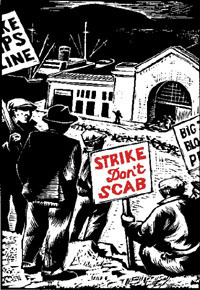|
|
|
|
|
|
L.I.R.R. Workers, on Brink of Strike, Prepare for Life on the Picket Line
L.I.R.R. Workers, on Brink of Strike, Prepare for Life on the Picket Line
http://www.nytimes.com/2014/07/16/nyregion/lirr-workers-on-brink-of-stri...
By MATT FLEGENHEIMERJULY 15, 2014
Mr. D’Agostino waited a beat.
“I still think it’s the right thing to do,” he said. “But it’s scary.”
A potential strike on the Long Island Rail Road is just days away. A look at what that could mean to about 300,000 riders each weekday. Video CreditBy Christian Roman on Publish DateJuly 15, 2014. Image CreditKathy Kmonicek for The New York Times
The workers navigate trains and test signals, repair aging cars and scan moldering stretches of track on the nation’s oldest rail system still operating under its original name: the Long Island Rail Road, chartered in 1834.
Many have worked for the railroad, alongside friends and often relatives, for decades — long enough to know that occasional saber-rattling between management and union leadership is to be taken in stride. It has been 20 years, after all, since employees last walked off the job. So when workers voted several months ago to authorize a potential strike, it was still possible to view the action as a distant concern.
Not anymore.
“You’re going on strike; you’re not going to get paid,” said Vincent D’Agostino, 31, a third-rail worker from Massapequa Park, on Long Island, describing employees’ collective epiphanies in recent days. “Back when we took the vote, it seemed so far away.”
Mr. D’Agostino waited a beat.
A possible walkout would affect about 5,400 Long Island Rail Road employees.CreditSeth Wenig/Associated Press
With a strike planned for as early as Sunday morning amid stalled negotiations between the railroad and its unions, workers now find themselves, ready or not, at the precipice.
They have been instructed to set money aside and curb expenses. They have been told to warn their children about insults that might be hurled at workers during a strike. And increasingly, they have been characterized by the Metropolitan Transportation Authority as greedy, relatively well-off government workers.
The authority’s chairman, Thomas F. Prendergast, told reporters on Monday that the employees were better compensated than any other rail workers in the country. A newspaper and radio advertising blitz, announced on Tuesday, will take this case directly to the public.
“They make almost $90,000 a year, get free health care and generous pensions,” the ads say, before alluding to the authority’s offer: raises that total 17 percent over seven years, with a handful of concessions from workers, especially new employees.
“Current employees would get everything they asked for. Yet the unions are still threatening to strike,” the ads continue. “When is enough enough?”
In an email, the authority compared wages on the Long Island Rail Road, which carries about 300,000 riders each weekday, with those on five comparable systems, including the Metro-North Railroad and New Jersey Transit. Long Island Rail Road conductors earn $36.25 an hour, according to the authority, while the median wage of their peers is almost $8 less. Among signal workers, car repair workers and electricians, the gap is smaller.
For many of the roughly 5,400 union members that a strike would affect, the knocks tend to rankle.
“We’re not millionaires,” said Robert Edzards, 44, a substation electrician, who said his base pay was about $65,000 per year, excluding overtime. “A lot of guys work week to week, month to month.”
Mr. Edzards, a 25-year veteran of the railroad who was part of the strike in 1994, said fellow workers had recently come to him for advice.
“I tell them how I do it: I’m trying to limit expenses, put everything on hold,” he said. “You never know how long it’s going to go.”
The railroad has long been a punching bag for frustrated commuters, though it is unclear where travelers might direct their ire during a strike. Some riders associate Long Island Rail Road workers with a major disability fraud scheme, first detailed in 2008. And in many circles, support for unions in general has diminished.
“The climate is not friendly toward unions,” said Louis Gentile, 52, the international president of the Independent Railway Supervisors Association and a gang foreman with the railroad.
“We’re waiting to see how the nation reacts,” he added. “We’re not sure how that will happen.”
The unions’ case is bolstered, leaders and members say, by the findings of two federal mediation panels since December. Twice, the panels ruled in favor of the unions, though the railroad’s offers in both cases were less generous than its current proposal.
Gov. Andrew M. Cuomo, whom some transportation experts expect to intervene if negotiations remain at a stalemate, sought to play down the potential damage of a strike on Tuesday.
“We’ve had strikes before, right? And we survived,” the governor, a Democrat, said, adding that the possible shutdown was “not a disaster.”
It could be “a real pain,” he allowed, “but not a disaster.”
State Comptroller Thomas P. DiNapoli, also a Democrat, struck a different tone, estimating on Tuesday that a disruption could cause up to $50 million per day in lost economic activity.
Workers say the authority has left them little choice, rebuffing the recommendations of the federal panels. A union letter to machinists and other employees earlier this month said that the railroad and Mr. Cuomo had “made us the enemy and forced us off our jobs.”
Then there is a website for the railway supervisors group, with rousing quotes from the likes of the Rev. Dr. Martin Luther King Jr., John F. Kennedy and Rosa Parks.
“You have enemies? Good,” reads one, attributed to Winston Churchill. “That means you’ve stood up for something, sometime in your life.”
Thomas Kaplan contributed reporting.
-

- Log in to post comments
- Printer-friendly version



